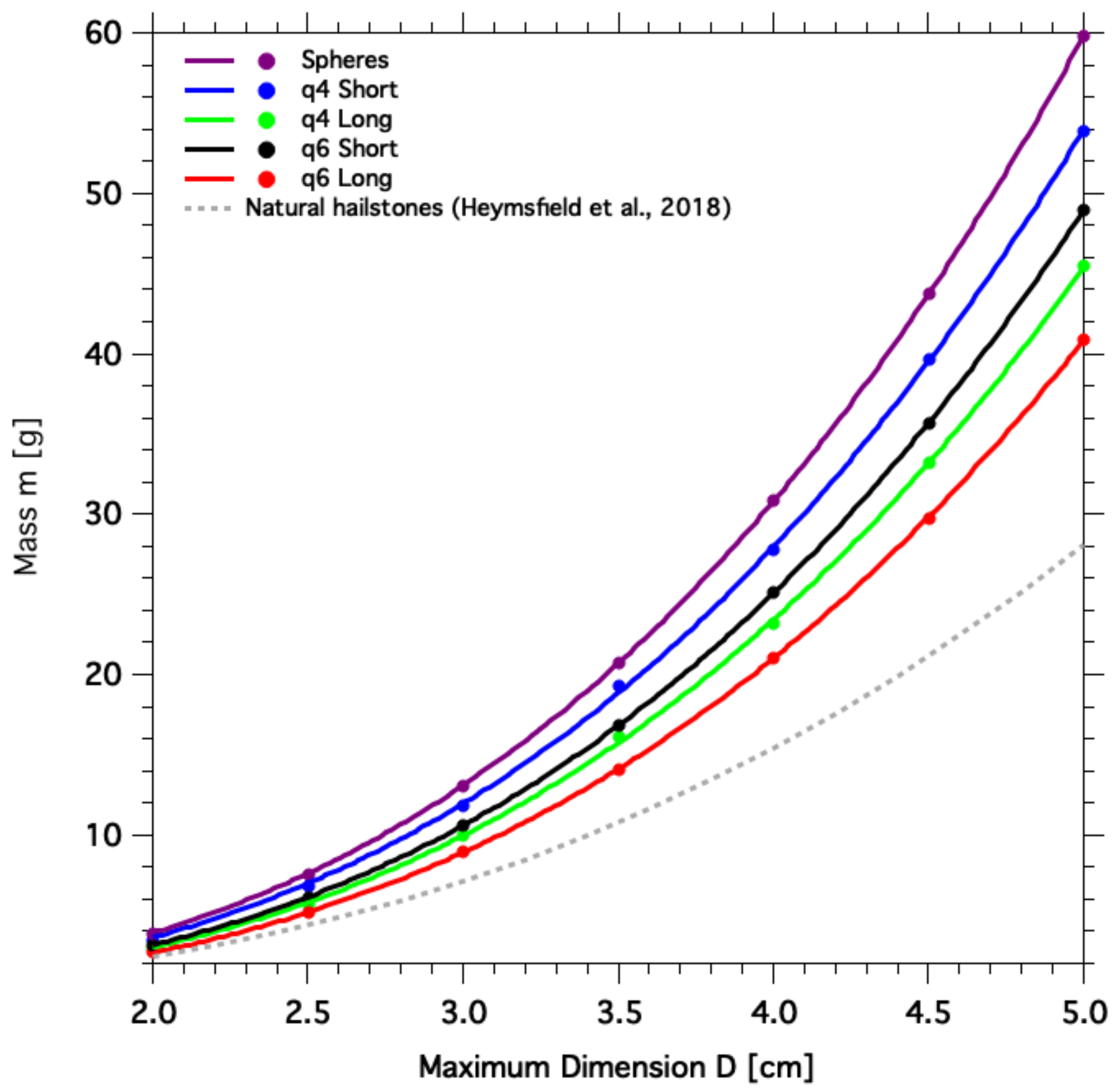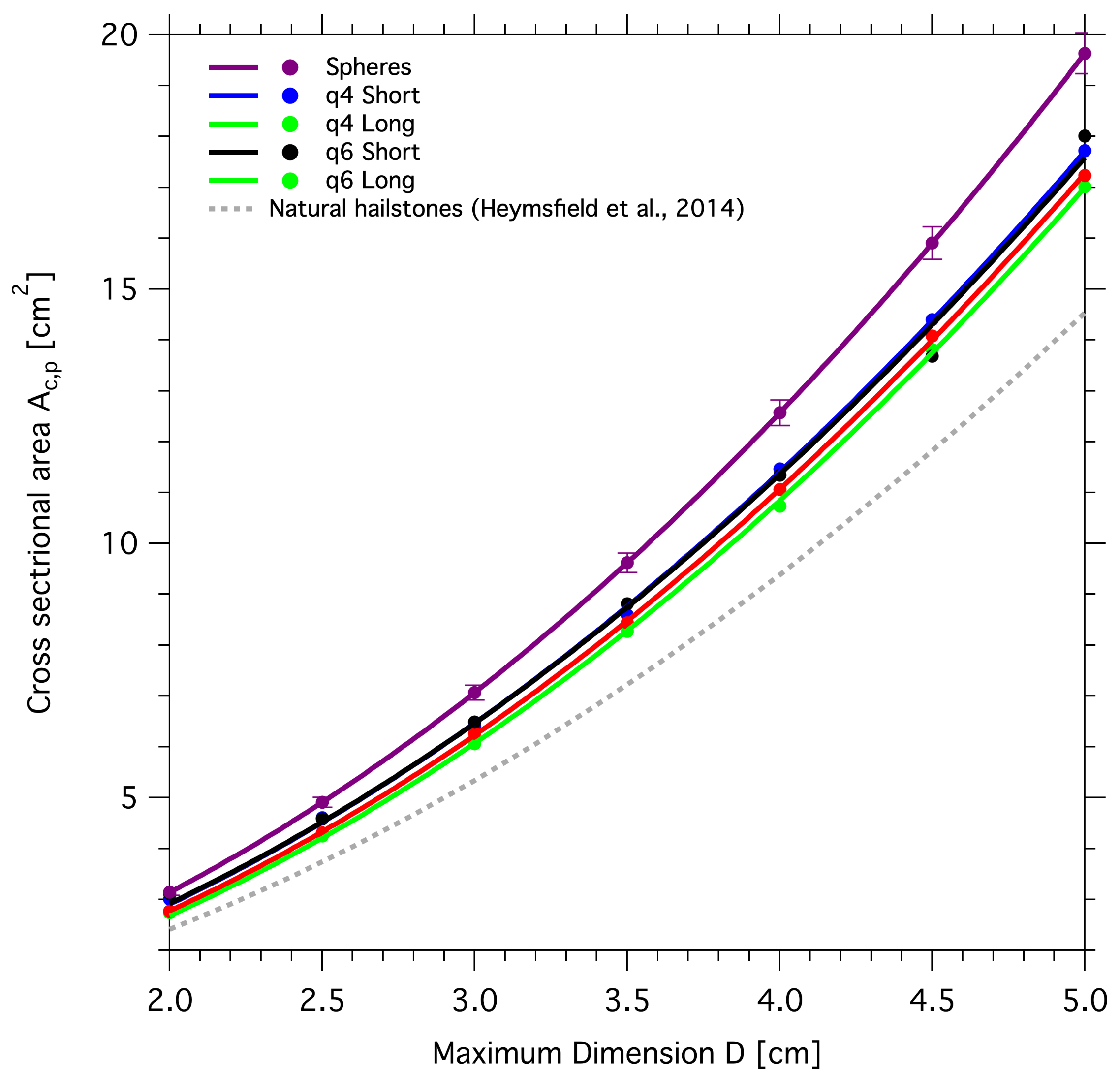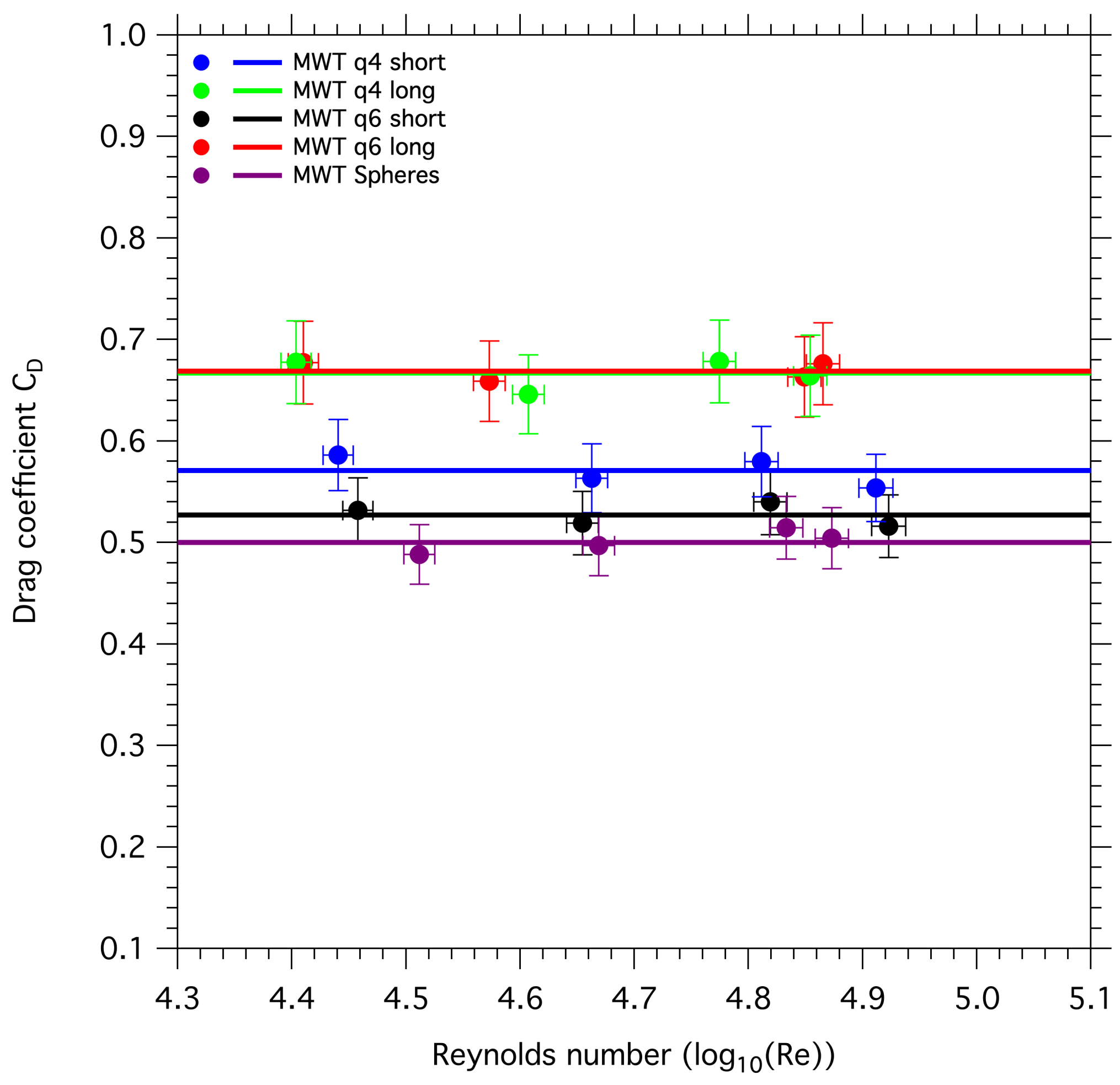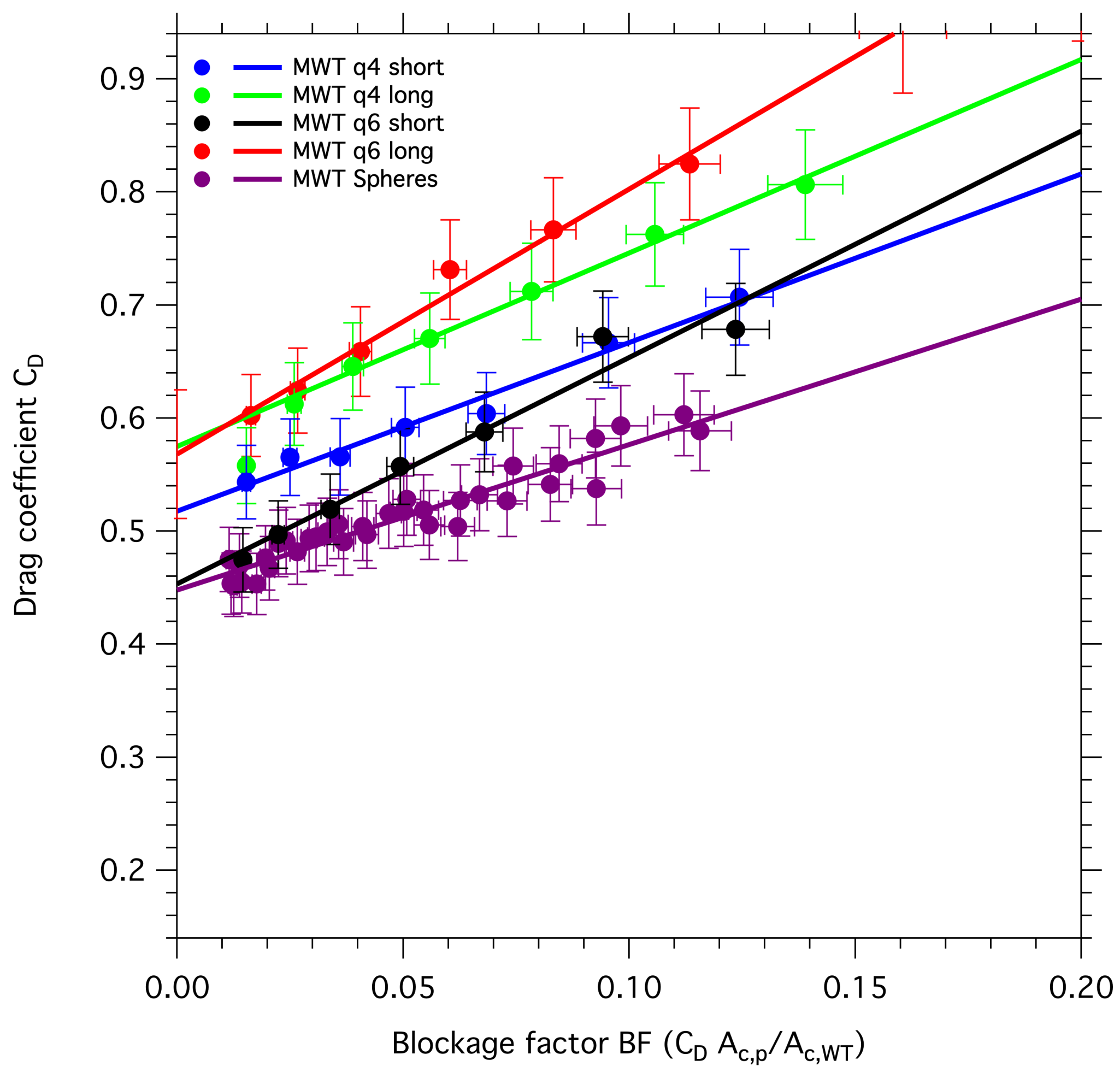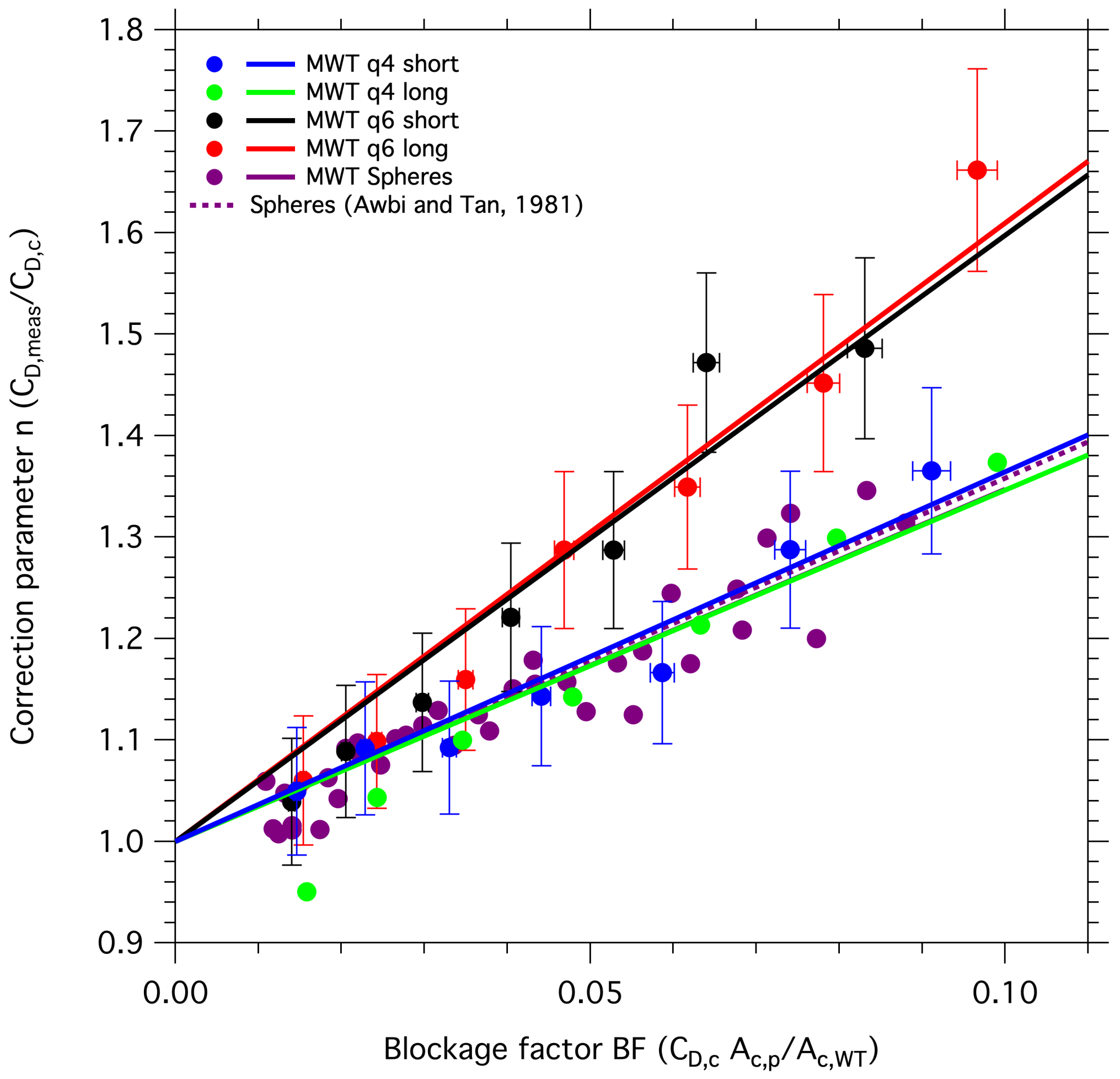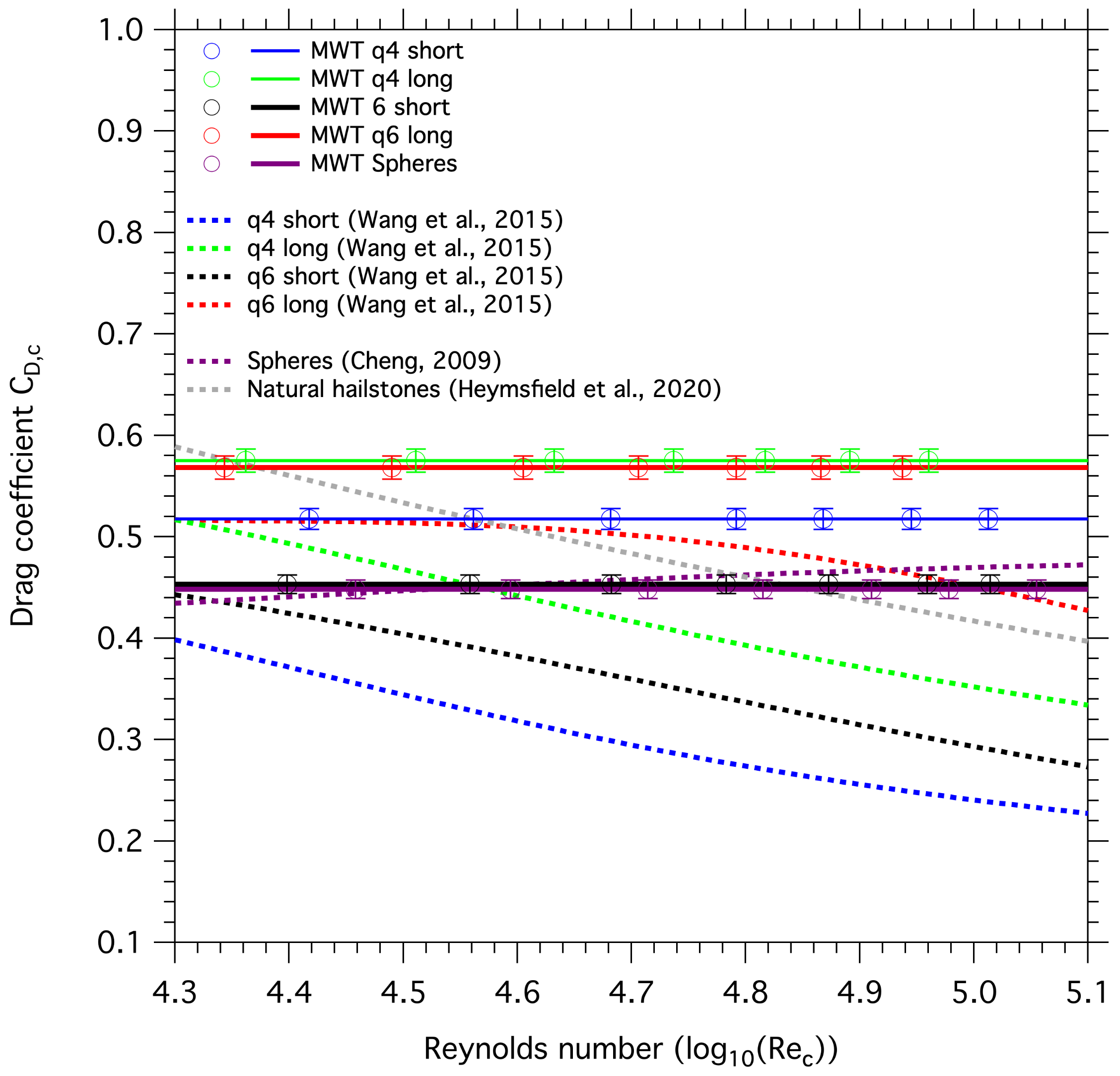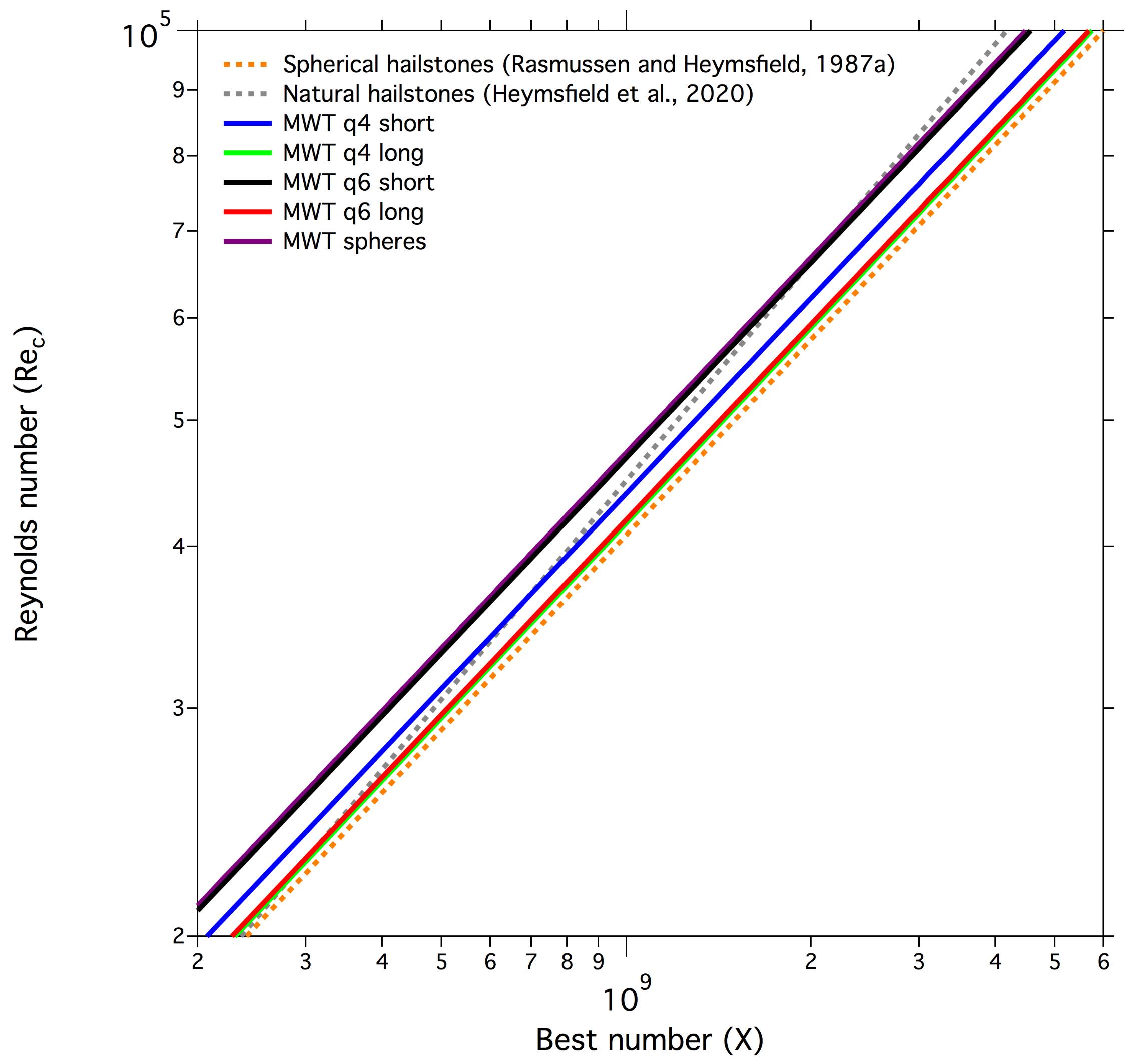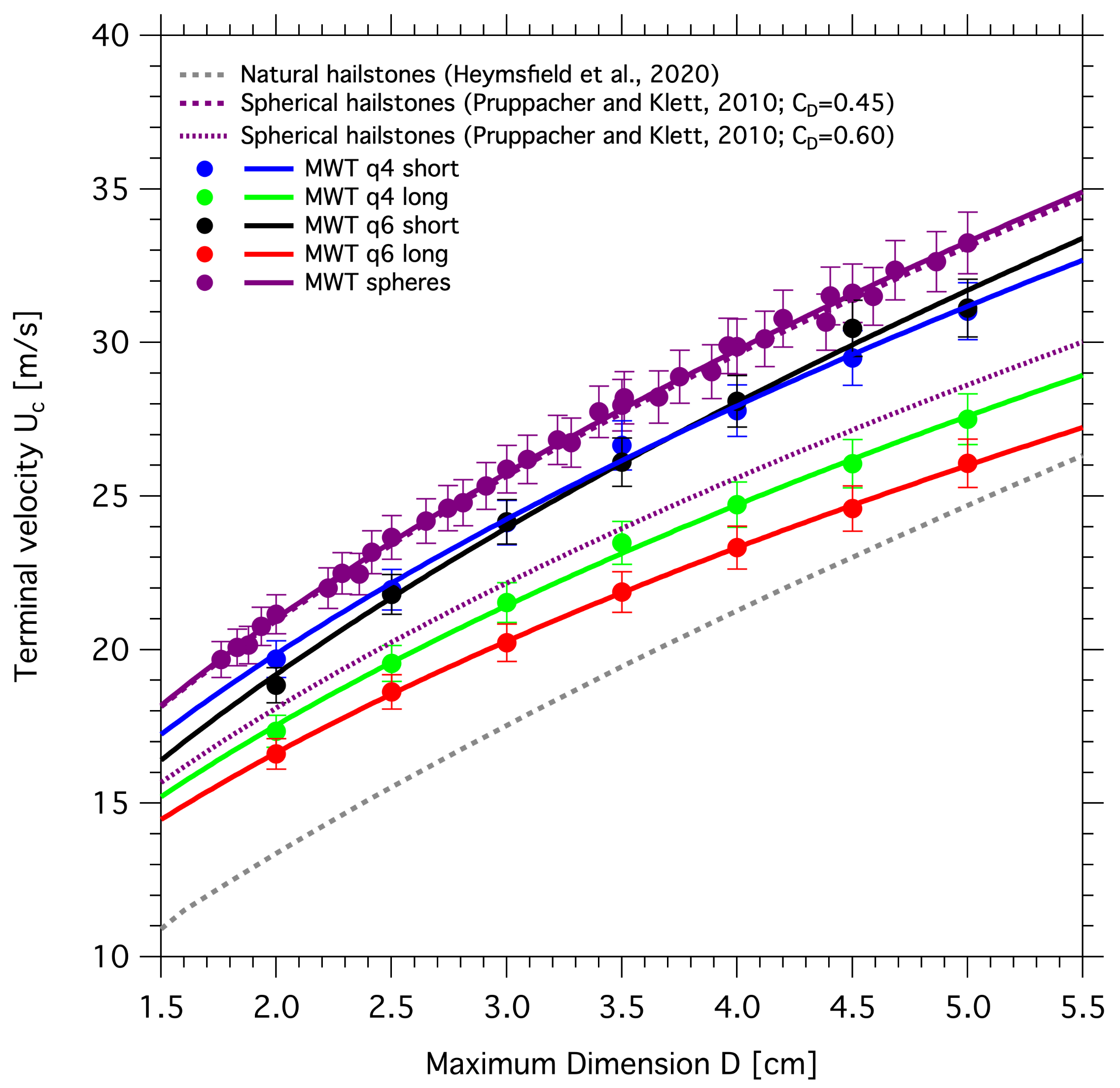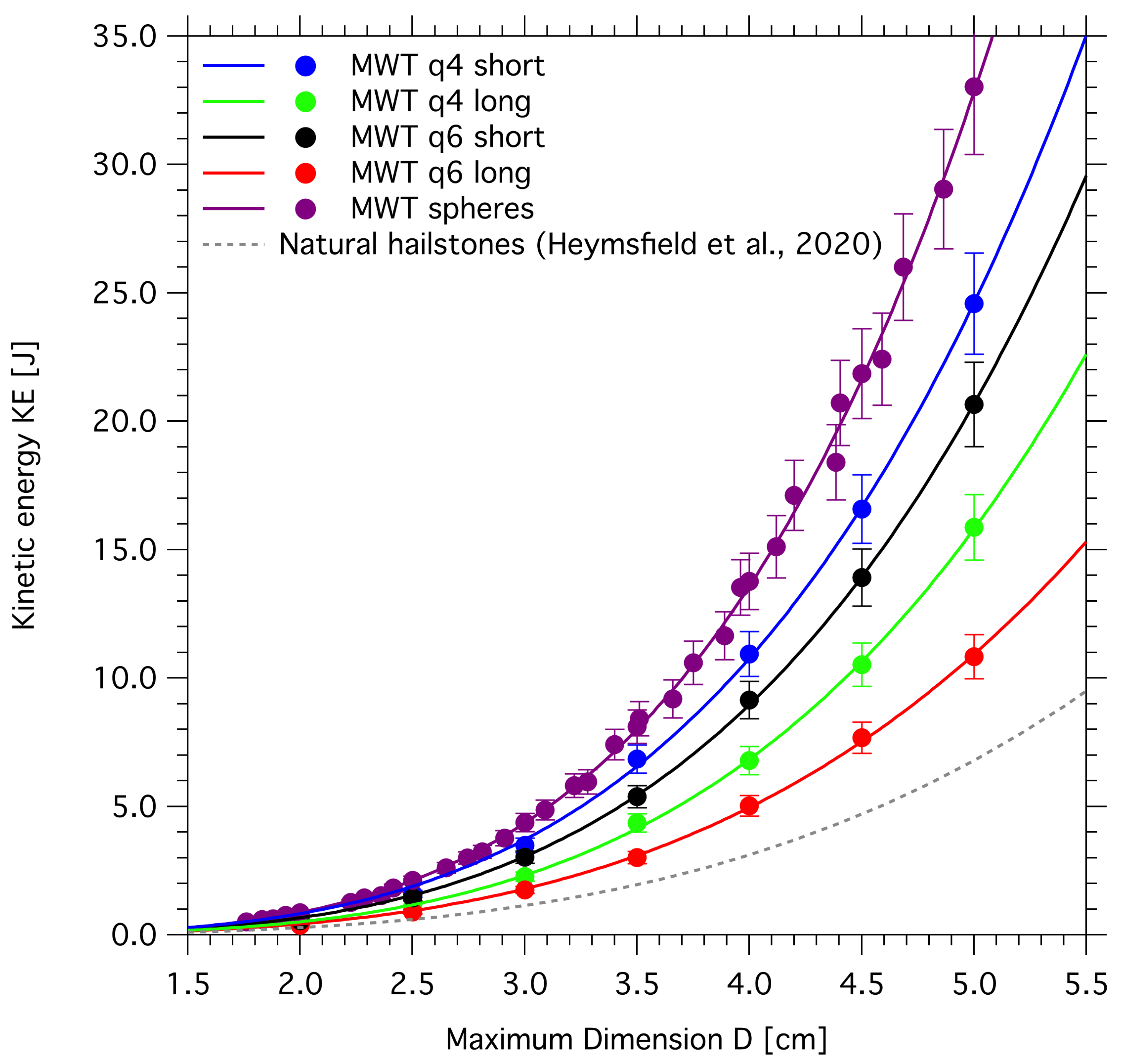3.1. Wind Tunnel Wall Corrections
Wind tunnel walls may affect the flow around an object substantially compared to a undisturbed case (walls very far away). To which extent the constraint flow deviates from free stream conditions depends on the geometry and the size of the wind tunnel and the object. The blockage ratio (
) is a measure for the strength of the influence of the walls on the flow around a given object. It is defined as the ratio of the cross-sectional area of the object
and the cross-sectional area of the wind tunnel
. For example, a sphere with
% freely floating in the center of a wind tunnel would experience a 25% higher air velocity at the constriction plane compared to the mean tunnel velocity. This affects the terminal velocity and the pressure distribution around the sphere. Especially the wake pressure is reduced which increases the drag due to a stronger gradient between base and wake pressure. This effect is referred to as wake blockage (e.g., Pope and Harper [
21]). In the present study,
varied between 2% for the smallest stones and 20% for the largest ones. Hence, the characteristic numbers introduced above needed to be corrected accordingly. For that, we applied a correction method introduced by Awbi and Tan [
22], who deployed the widely used Maskell’s wake blockage theory for bluff bodies Maskell [
23] and modified it by means of a semi-empirical approach to correct the drag coefficient for spheres in a rectangular wind tunnel in a range where it is almost independent of the Reynolds number, i.e.,
. Maskell’s correction equation is given as follows:
Here n is the blockage correction parameter, the blockage coefficient, and U the tunnel air velocity. The index c indicates the corrected value. The key in getting n, and thus to correct the wind tunnel data which is affected by the walls, is the determination of . Maskell used a theoretical value of the blockage coefficient, i.e., , where is the corrected base pressure coefficient.
A necessary condition to apply this approach is the independence of from . As will be shown below in more detail the correction method extrapolates the data which are affected by the walls to free conditions, i.e., to a of 0. Afterwards, that obtained value is used to correct the data along a certain Reynolds number range. Thus, to correct our data we had to verify that the drag coefficient is also constant in the observed Reynolds number range. This was done by printing four stones of each hailstone category and spheres, all with a maximum diameter of 3 but with varying densities between and . The lower densities were obtained by varying the infill of the print material and the higher ones by adding lead spheres into the center of the stones. We were restricted to the 3 cm size of the hailstones, because on one hand the stones should be as small as possible in order to reduce the blockage effect, and on the other hand, they should be large enough to equip them with lead spheres. The resulting was about 7%.
Figure 4 shows the results of the data. The symbols and the lines are the data points and the average over the individual four data points. All four hailstone categories reveal a constant drag coefficient in a Reynolds number range from
20,000 to
85,000. The error bars indicate a measurement uncertainty of 6%. It was obtained by applying gaussian error propagation to Equations (
1) to (
4). The spheres have the lowest average drag coefficient of
and show no significant difference to the q6 short hailstones which have an average value of
. The q4 short category possess an average value of
which is also within the error of the q6 short category. However, all the aforementioned categories have significantly lower values than the long lobed hailstones. The q4 long and q6 long categories show almost identical average values of
and
. The results indicate that the number of lobes does not change the drag coefficient in the investigated Reynolds number range but the length of the lobes does. The short lobed categories seem to behave more like spheres, and therefore have similar drag coefficients. The important information of
Figure 4 is that the drag coefficient is constant over a wide Reynolds number range. This fact allowed us to apply the semi-empirical wall constraint correction method of Awbi and Tan [
22] which is described in detail in the following.
Figure 5 depicts the drag coefficient as obtained from the experiments described in
Section 2.2 versus the blockage factor, i.e.,
. All data points show a linear trend against the blockage factor in the investigated Reynolds number range. From the extrapolations of the linear regressions to
the free drag coefficient is obtained and listed in
Table 4. Free in this context means no influence of the walls. From the extrapolated
the blockage correction parameter
n was calculated and plotted as function of
in
Figure 6.
The correction parameter is definitely higher for the q6 hailstones than for the q4 hailstones and the spheres. This indicates that
of the q6 categories is more affected by the walls than the other categories. That can be explained by the low pressure in the wake region which is decreased when the number of lobes is higher. Also shown in
Figure 6 is a curve for spheres obtained by Awbi and Tan [
22] (dashed purple line). The blockage coefficient
coincides remarkably good with the one derived in our study for the spheres, which is a verification of our measurement.
Table 5 shows the values of the blockage coefficient
which were derived from the slopes of the linear regressions as well as the value of Awbi and Tan [
22].

